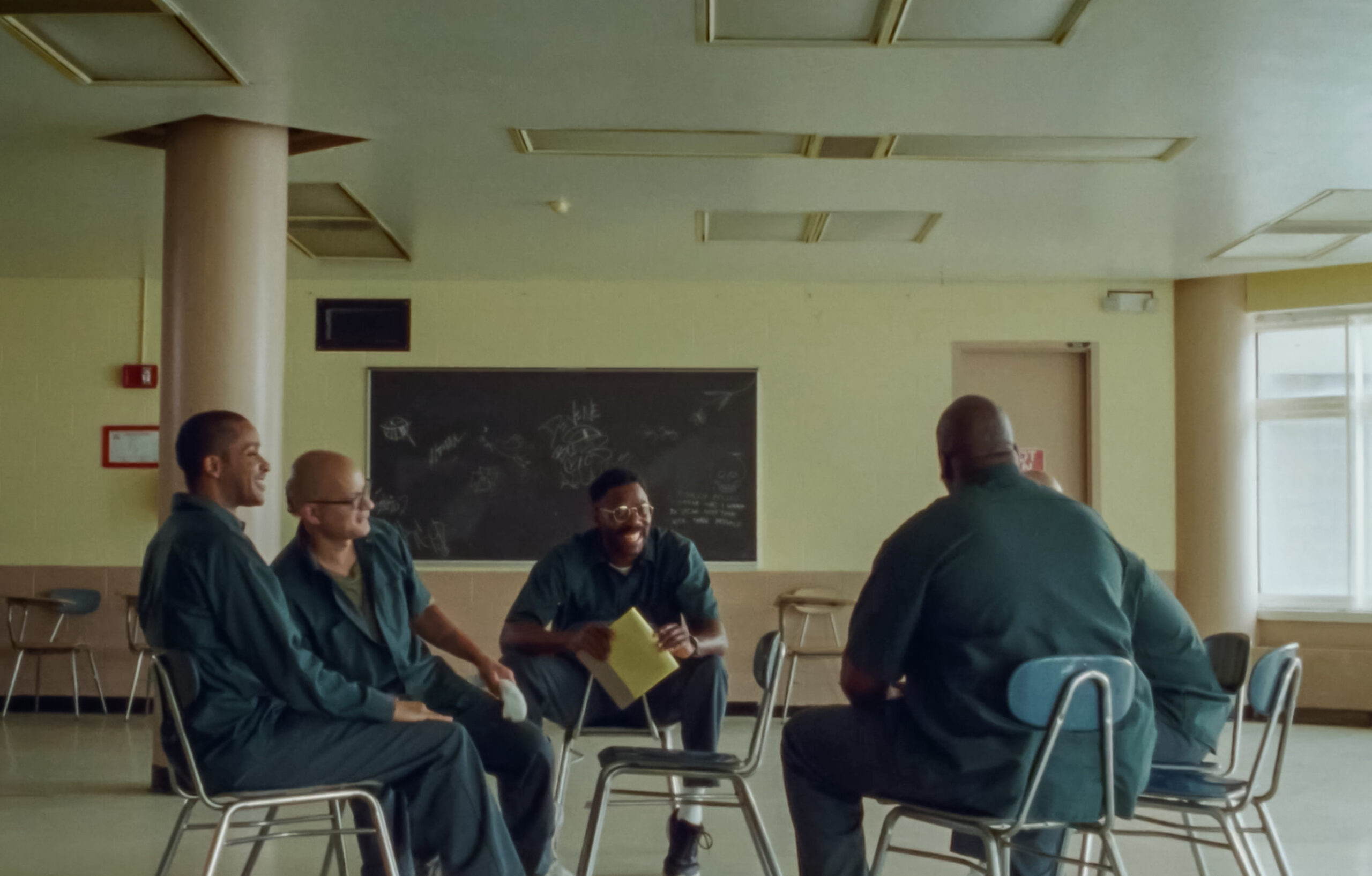
Of the many cruelties of our carceral system — and there are many — the stoppage of time seems especially callous. Think of your schedule so far today: the things you did, the places you went, the freedom to move between them. How much time did you spend thinking about what you’re going to do tomorrow and tomorrow and tomorrow?
Now consider what it would mean, emotionally, spiritually, physically, if all those tomorrows evaporated into a confining concrete box of rigorous structure and little hope of a fresh start. Would it break you?
For many, the answer is yes. For the participants of Rehabilitation Through the Arts (RTA) at New York’s Sing Sing Correctional Facility, performance is the way to keep the break at bay. As one RTA player describes, prison desensitizes and dehumanizes the man. RTA reverses that. And that’s all he wants. All he needs.
Directed by Greg Kwedar and based on John H. Richardson’s 2005 Esquire article, Sing Sing chronicles one season in the RTA as the actors rehearse and perform Breakin’ the Mummy’s Code, a time-traveling comedy featuring ancient Egypt, Robin Hood, a Wild West shootout and Hamlet’s “to be or not to be” soliloquy. How this script comes to be is one of the movie's funniest scenes.
Colman Domingo plays John “Divine G” Whitfield, unjustly imprisoned for second-degree murder, and RTA’s resident playwright and most ardent supporter. Divine G is looking for new talent and sees it in the tough-as-nails gangster who can quote King Lear: Clarence “Divine Eye” Maclin (playing himself).
Like many of the performers in Sing Sing, Maclin is formerly incarcerated and an alumni of the real-life RTA (which continues to this day). Their participation brings an authenticity the narrative could not do without. There are professionals, too — Domingo and Paul Raci, who play the RTA director, are probably the most recognizable — and they are pitch-perfect in every way. But it’s the real-life graduates of RTA who hold the frame with dignity and delight. To watch them at work is a wonderful thing. In a stunning way, Sing Sing is a continuation of that process.
The film is stunning, pure and simple. The film refrains from providing reductive truths and easy answers — particularly with Divine G. In any other movie, Divine G would be in opposition to his fellow inmates, armed with more than a few speeches about miscarriages of justice. But Kwedar and co-screenwriter Clint Bentley don’t take the bait. Instead, they place Divine G side-by-side with his fellow inmates, each leaving their own breadcrumb trail of fates unfair. Some were born into the life; others fell into ones that offered little chance out. In one scene, Divine Eye points out that if his friends are behind bars, his son is behind bars and he’s behind bars, maybe this is where he belongs. In another scene, Mike Mike (Sean San José) gives a sense that a healthy family life was available to him on the outside, but drugs got the better of that one.
Framed like that, you might think Sing Sing is a by-the-numbers, feel-good story about overcoming. It’s not, even if the movie, top to bottom, will fill you with goodness and hope. A lot is thanks to the performances, but don’t overlook Kwedar’s graceful touch and cinematographer Pat Scola’s artistic simplicity that informs rather than decorates. You may not notice them, but many shots employ unfocused, abstract images to slow down the narrative so the audience can digest information. It’s a touch of the poetic that never feels intrusive.
There’s a real harmony between the artists in front of and behind the camera to create something moving, something lasting here. A lot of movies, a lot of good movies, come and go. Sing Sing will stick.
ON SCREEN: Sing Sing is playing now in limited release.
